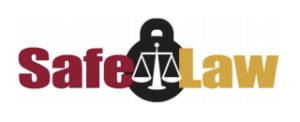Guest Post from Reminger Reports, Reminger Attorneys at Law
As “non-essential” businesses begin to bring back staff following extended furloughs and, perhaps, even layoffs, one of the critical questions faced by many companies is how to ensure a safe workplace for those returning, particularly in light of concerns over COVID-19.
Although advice on this topic can come from various state and local agencies, the U.S. Department of Labor’s Occupational Safety and Health Administration (“OSHA”) has taken the lead in promulgating useful guidance for employers to address their concerns. One recent pamphlet issued by OSHA, in particular, deals directly with promoting workplace safety and the areas on which an employer should focus before, during, and after its employees return to work in the midst of the coronavirus pandemic.
The following article summarizes that guidance and presents a helpful starting point for those employers looking to get ahead of the curve before their staff returns to the physical workplace.
When you have professional liability insurance coverage through Alta Pro Insurance, you’ll have the claims repair and legal defense experts of Reminger Law on your side. Want to have a resource like that in your practice? Here’s how to get it.
On June 18, 2020, OSHA issued a Guidance on Returning to Work to assist employers and their employees with reopening non-essential businesses during the evolving pandemic. OSHA’s guidance supplements the previously developed Guidance on Preparing Workplaces for COVID-19, as well as the White House’s Guidelines for Opening Up America Again.
The Guidance provides general principles for updating restrictions originally put in place to slow the spread of the coronavirus. As employers will likely recall, the White House’s Guidelines for Opening Up America Again provided three reopening phases (Phase 1, 2, & 3). These phases imposed certain restrictions on business operation, such as remote work and alternative business operations to provide goods (e.g., curbside pickup), and encouraged businesses to remain flexible during operation. That term – “flexibility” – has become a watchword for employers seeking to comply with federal, state, and local regulations on dealing with the workplace impact of COVID-19.
Based on the most current information, OSHA recommends that employers develop reopening plans that strategically address the following “guiding principles”: (1) hazard assessments to determine sources of likely exposure to COVID-19; (2) hygiene practices for cleaning and disinfecting; (3) social distancing practices; (4) identification and isolation of sick employees; (5) an employee’s return to work after illness or exposure; (6) using barriers/shields and personal protective equipment (“PPE”) as a result of an employer’s hazard assessment; (7) staying flexible with remote work and sick leave; (8) training on signs, symptoms, and risk factors associated with COVID-19; and (9) practices for ensuring that no adverse or retaliatory action is taken against an employee who adheres to these guidelines or raises concerns on safety. Through these nine principles, OSHA seeks to address the common concerns that every business and its employees face when attempting to reopen.
OSHA’s “guiding principles” are summarized as follows:
- Hazard Self-Assessment – OSHA recommends that employers take the time to determine when, where, and how workers might likely to be exposed to COVID-19 and other infectious disease in the course of their job duties. Employee job tasks should be assessed to determine if those tasks involve possible exposure and/or interaction with the general public. The extent to which employees traditionally work in close proximity with each other is just one example of the types of hazards an employer should consider when determining the overall risks it faces in bringing back staff. Because each business is unique, certain employers will need to consider and address PPE needs for their work site(s) that are commensurate with the unique risks faced by each employer at those various locations. Employers should keep in mind that each community’s current outbreak condition may have an increased impact on the COVID-related risks associated with worker interaction and exposure to the general public.
- Hygiene – Employers should establish policies and practices for regular hand hygiene, respiratory etiquette (tissues/masks), and cleaning and disinfection. Providing hand sanitizer, soap, water, and paper tissues and towels for workers, customers, and visitors are essential, as it encourages individuals within the common workplace to adhere to the company’s hygiene policy. Employers should also look to identify and target high-traffic areas, surfaces, and items for enhanced cleaning and disinfection using EPA-approved disinfectants. At this point, most third-party cleaning vendors are offering heightened disinfectant and cleaning services that can be included in a company’s regular maintenance.
- Social distancing – Social distancing practices should be implemented in the workplace, to the extent feasible, to maintain distance between all employees, as well as to limit interaction with third-party vendors and customers as appropriate. This requires employers and employees alike to be flexible with not only the physical space they occupy in the workplace but also, potentially, the times during which they are present in the physical facility. Examples of physical distancing policies include limiting occupancy, demarcating six-feet zones, and posting signage to limit and remind workers, customers, and visitors to maintain at least six feet between one another. Six feet of distance should be the general rule, however social distancing practices may change based upon a community’s current transmission or phase, so local health departments should be consulted for the most up-to-date recommendations. In addition, as stated above, employers should consider allowing employees to telework and/or use staggered shifts to limit the number of people present in the workplace at any one moment.
- Identification and Isolation of Sick Employees – Employees must be encouraged to self-monitor, screen, report, and isolate in the case of an onset of COVID-related symptoms. Consistent with OSHA and CDC guidelines, as well as the recommendations of the CDC, employers should exclude employees from the workplace if they exhibit signs or symptoms of COVID-19. Establishing a protocol for responding to symptomatic employees is essential for managing people who become ill in the workplace, and should include a plan for cleaning and disinfecting spaces, as well as a plan for how and where a sick person will be isolated (in the event they are unable to leave the workplace immediately). OSHA makes clear that workplace temperature testing (for COVID-related reasons) and COVID tests may be permitted, but employers who keep records of health screening or temperature checks should be mindful that those records qualify as medical records under the Americans with Disabilities Act and the DOL’s Access to Employee Exposure and Medical Records standard (more guidance for testing as it relates to other laws is available under the EEOC’s What You Should Know About COVID-19 and the ADA, the Rehabilitation Act, and Other EEO Laws).
- Return to Work After Illness or Exposure – Employers should follow CDC guidance for employees who are discontinuing self-isolation and returning to work after illness. This likely includes ensuring that employees routinely monitor themselves or receive monitoring if they have been exposed to someone with COVID-19.
- Controls – OSHA recommends engineering and administrative controls, safe work practices, and PPE that are uniquely tailored to an employer’s hazard assessment. These controls may include physical barriers/shields to separate workers, enhanced ventilation, staggered work shifts, limited breakroom capacity, replacing in-person meetings with video-conference calls, requiring face coverings, and/or ensuring workers are provided and are using appropriate PPE. Choosing what controls to implement is a common concern, and the ultimate goal should always be to make the workplace reasonably safe.
- Workplace Flexibilities – Policies should be evaluated to facilitate work-from-home (telework), sick or other types of leave, and other options that help minimize an employee’s exposure risks. As stated above, these policies should take into consideration each employer’s unique hazard assessment of its workplace and staff. Employers should communicate about workplace flexibilities, and ensure workers understand both how to make use of available options and the importance of doing so.
- Training – Employers should clearly communicate and train employees on where, how, and to what sources of COVID-19 an employee might potentially be exposed in the workplace, as well as how to prevent the spread of COVID-19 at work. Employees should receive training on the signs, symptoms, and risk factors associated with COVID-19, as well as steps they can take to protect themselves (e.g., face coverings) and those policies the employer is implementing to protect the workplace (e.g., controls and workplace flexibilities).
- Anti-Retaliation – Supervisors should familiarize themselves with workplace flexibilities and other human resource policies and procedures, as well as with workers’ rights in general. Employers should ensure that no adverse or retaliatory action is taken against an employee who adheres to governmental guidelines or raises workplace safety and health concerns. Employers should also ensure employees understand their rights to a safe and healthy work environment, and their right to raise workplace safety and health concerns. To that end, companies should develop and train their management/supervisors on how to accept and forward reports of COVID-related concerns. OSHA has prepared workplace postings that inform employers and employees of these rights and can be obtained directly from the agency.
OSHA’s nine “guiding principles” from its Guidance on Returning to Work represent a non-exhaustive list that addresses many of the common concerns that all businesses are currently facing. However, an employer may, because of its line of business, determine that additional practices are needed in order to safely resume operations and the reopening of its physical facilities. A key component of any effort to implement new policies and procedures to ensure workplace safety from COVID-19, however, is clear communication with the workforce. No policy for workplace safety can be effective if it is not clearly communicated to employees and take into consideration the concerns those employees have about workplace safety issues, particularly during the coronavirus pandemic.
Of course, each business is unique and, as such, each will likely encounter issues not addressed in OSHA’s guidance material. To that end, should you have any questions regarding the various government guidance on reopening your business, please reach out to any member of Reminger’s Employment Practices Group.
This has been prepared for informational purposes only. It does not contain legal advice or legal opinion and should not be relied upon for individual situations. Nothing herein creates an attorney-client relationship between the Reader and Reminger. The information in this document is subject to change and the Reader should not rely on the statements in this document without first consulting legal counsel.

ABOUT REMINGER
Reminger is included in the 2020 Best Lawyers List for both “US News & World Report” and “Best Lawyers” Based in America’s heartland yet delivering global reach, Reminger provides its clients with the best of both worlds: the knowledge and skill set of a larger firm, combined with the personal attention you would expect from a smaller firm. Since the firm first opened doors at 75 Public Square in Cleveland in 1958, Reminger has grown from two individuals to a full-service firm employing several hundred attorneys, paralegals and staff, in 14 offices across Ohio, Kentucky and Indiana.

















